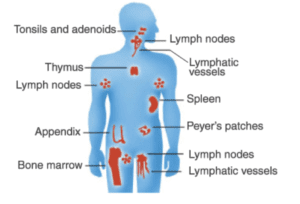Lymphatic therapy
Lymphatic therapy can be a great benefit to cancer patients and here’s why:
First, the lymphatic system plays a critical role in the body’s immune system. It helps to remove waste products, toxins, and excess fluid from the body. However, cancer and its treatments can put a strain on the lymphatic system and slow down its ability to function effectively. Lymphatic therapy can help to stimulate the lymphatic system and improve its functioning, helping the body to remove waste products and toxins more effectively.
Second, cancer and its treatments can cause fluid buildup in the body, which can cause swelling, discomfort, and even pain. Lymphatic therapy can help to reduce fluid buildup by increasing circulation and improving lymphatic function. This, in turn, can help to reduce swelling, relieve pain, and improve the patient’s overall comfort.
Third, lymphatic therapy can also help to improve the patient’s overall physical and mental well-being. The gentle, rhythmic massage movements used in lymphatic therapy can promote relaxation, reduce stress, and improve mood. This can be especially important for cancer patients who may be dealing with anxiety, depression, and stress related to their diagnosis and treatment.
Fourth, lymphatic therapy can be a complementary therapy to other cancer treatments such as chemotherapy and radiation. By improving lymphatic function and reducing fluid buildup, lymphatic therapy can help to improve the patient’s overall health, making it easier for them to tolerate the side effects of these treatments.
So, in conclusion, lymphatic therapy can be a valuable addition to a cancer patient’s overall treatment plan. By improving lymphatic function, reducing fluid buildup, and promoting physical and mental well-being, this therapy can help patients feel better and cope better with the challenges of cancer and its treatments. It’s important to note that lymphatic therapy should always be done under the guidance of a qualified therapist and in consultation with a doctor to ensure it’s safe and appropriate for each individual patient’s needs and health status.
How does it work?
This therapy has been well monitored by our nurses and physicians in order to decrease the risk of air embolism.
The mechanism is easy to understand: healthy cells need oxygen, whilst cancer cells despise oxygen; this is why they choose to live in a low oxygen environment, like most bacteria.
In fact, the only place in our bodies where there is no oxygen is the cancer site.


